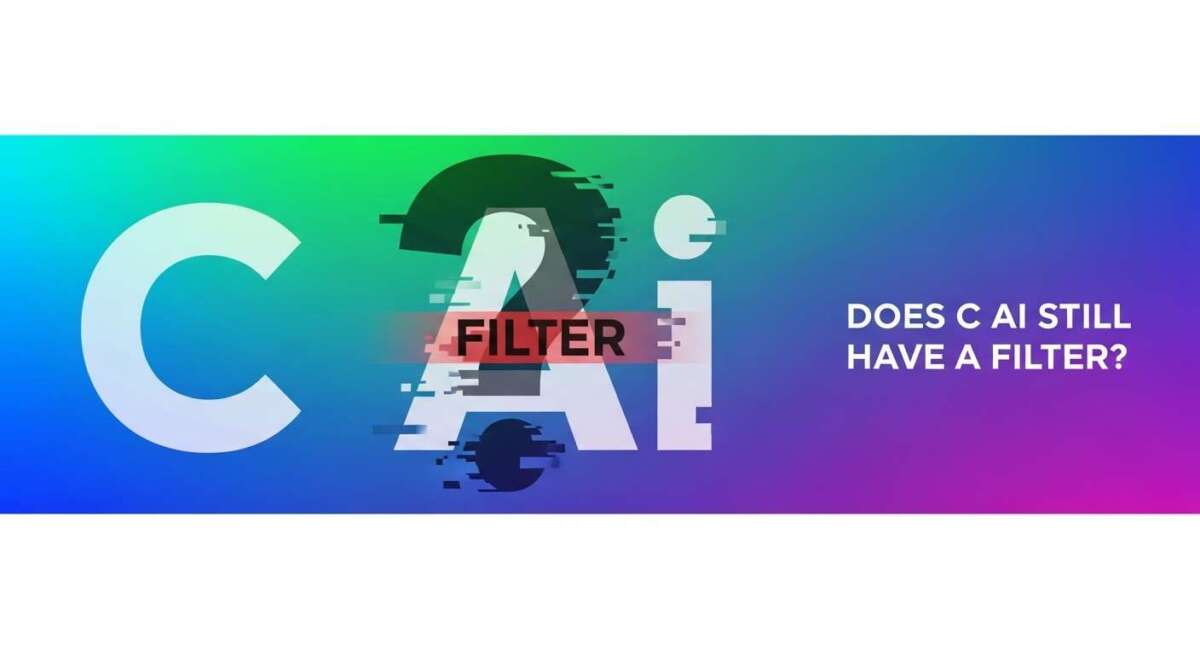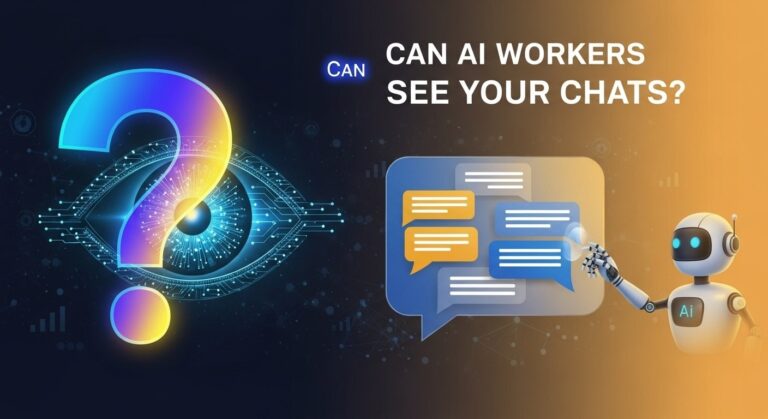Does C Ai Still Have a Filter? Unveiling the Truth Today
Are you wondering if C Ai still has a filter? You’re not alone.
Many users have noticed changes and are curious about what’s really going on behind the scenes. Does the filter still block certain content, or has it been removed altogether? Understanding this can change how you interact with C Ai and what you can expect from your conversations.
Keep reading to get the clear answers you need, so you can make the most of your experience without surprises.
Filter History On C Ai
The filter history on C AI shows its evolving role in shaping user experience. Filters have been part of C AI since the start. They guide the type of content the AI can generate. This history reveals how C AI balances creativity with safety.
Initial Purpose And Design
The original filter aimed to block harmful and offensive content. It helped keep conversations safe and respectful. Developers designed it to limit hate speech, explicit material, and illegal topics. This filter worked quietly in the background. Users rarely saw its effects unless content was restricted.
Early User Reactions
Users had mixed feelings about the filter at first. Some appreciated the protection from inappropriate content. Others felt it limited their freedom to explore ideas. A few users tried to bypass the filter with clever prompts. Feedback led developers to adjust the filter over time. They aimed to improve safety without stifling creativity.
Recent Changes To The Filter
The filter on C AI has undergone notable changes recently. These updates aim to balance user freedom and safe content generation. Users have observed shifts in how strict the filter is and how new models handle content moderation.
Understanding these changes helps users know what to expect from C AI now. It also sheds light on how the platform manages sensitive or restricted content.
Reduction Of Filter Restrictions
C AI has reduced some of its filter restrictions. This means the system allows more types of content than before. The changes make conversations feel more natural and less limited.
The filter no longer blocks as many topics or words. Users can explore a wider range of ideas and expressions. This shift responds to feedback asking for fewer limits on creativity.
Introduction Of New Models
New AI models have been introduced to replace older versions. These models have updated filters that are less strict. They focus on improving user experience while keeping safety in mind.
With new models, C AI offers smarter and more flexible content control. They are designed to understand context better and reduce unnecessary censorship. This helps maintain a good balance between openness and responsibility.
Current Filter Status
The current filter status of C AI is a topic many users discuss. Filters help keep conversations safe and respectful. They block harmful, inappropriate, or sensitive content. Understanding if C AI still has a filter is important for users who want a secure experience.
Updates to the filter can change how the AI responds. Some filters may be relaxed or tightened based on feedback and policy changes. This section explores the official stance and user experiences about C AI’s filter.
Official Statements From C Ai
C AI has released official statements about its filter system. The company confirms that filters remain active. They aim to prevent harmful and offensive content from appearing.
Recent updates mention adjustments to improve user interaction. Some restrictions have been softened to allow more natural conversation. Despite changes, the filter still blocks explicit or dangerous content.
The developers emphasize user safety as a top priority. The filter is part of their ongoing effort to create a positive environment.
User Experiences And Reports
Users report mixed experiences with the filter on C AI. Some notice fewer restrictions in certain topics. Others find the filter still blocks explicit language effectively.
Several users say the filter feels less strict than before. This allows more freedom in conversations. Yet, many agree it still prevents harmful or offensive replies.
User feedback shows the filter works but is evolving. People appreciate the balance between openness and safety. The filter’s presence is clear but not overly limiting.

Credit: www.youtube.com
Impact On User Content
The impact on user content from changes to C Ai’s filter is significant. It shapes how users express themselves and interact with AI characters. Users notice how the presence or absence of filters affects the kind of content generated. This influences creativity, safety, and user experience on the platform.
Freedom In Ai Interactions
Removing or reducing filters allows users more freedom to explore ideas. Conversations can become more open and less restricted. Users can create content that feels more natural and personalized. This freedom encourages experimentation with different themes and tones. The AI can respond with fewer limitations, making chats feel more real.
However, this freedom requires responsibility from both users and developers. Without filters, users must guide AI interactions carefully. This helps keep conversations respectful and meaningful. The balance between freedom and control is key for a good user experience.
Concerns Over Nsfw And Harmful Content
Less filtering raises concerns about NSFW content appearing more often. Users may encounter inappropriate or harmful messages. This can affect younger audiences and those seeking safe environments. The risk of offensive or unsafe content increases without proper moderation.
Content creators and platform owners face challenges in managing harmful outputs. They must find ways to protect users while keeping AI responses engaging. The debate over how much filtering is needed continues. Safety and freedom must be carefully balanced to serve all users well.
Workarounds And Bypasses
Workarounds and bypasses often attract users who want to explore AI capabilities without restrictions. These methods aim to remove or reduce filters that control content output. People share tips and tricks across forums and communities to access more flexible AI responses. Understanding these approaches helps you grasp how AI filters operate and how users interact with them.
Community Methods To Remove Filters
Many online groups share techniques to bypass AI filters. Some suggest using coded language or slang to trick the system. Others create alternative accounts with fewer restrictions. Users also experiment with prompt engineering, changing how questions are asked. Some communities develop custom scripts or tools to override filters. These methods vary in complexity and success rate.
Risks And Consequences
Bypassing AI filters can lead to unsafe or harmful content. It may expose users to offensive or inappropriate responses. Using workarounds can violate the AI platform’s terms of service. This might result in account suspension or permanent bans. Moreover, it can reduce the quality and reliability of AI interactions. Users should weigh these risks before attempting to remove filters.
Future Of Filtering On C Ai
The future of filtering on C AI remains a key topic among users and developers. Filters help control content, ensuring it fits community guidelines. At the same time, they can limit creativity and user freedom.
As AI technology advances, the approach to filtering will likely change. Developers aim to find a balance that protects users while allowing expressive interactions.
Potential Updates And Policies
C AI may introduce new filter updates to improve user experience. Policies could become more flexible, adjusting to different contexts and user needs. The goal is to reduce unwanted content without blocking useful or fun conversations.
Developers might add smarter filters that understand context better. This could help avoid over-blocking while still preventing harmful or inappropriate content. Community feedback will likely influence these updates significantly.
Balancing Creativity And Safety
Maintaining a safe environment is essential for all users. Yet, creativity thrives when users feel free to express themselves. C AI will need to balance these two priorities carefully.
Innovations in filtering technology could help keep conversations safe without stifling imagination. Customizable filters might allow users to choose levels of content control. This flexibility could satisfy both cautious users and those seeking more open dialogue.
Credit: play.google.com
Frequently Asked Questions
Does C Ai Still Have A Content Filter?
Yes, C Ai still has a content filter, but recent updates have reduced its strictness. The filter aims to block harmful, illegal, or inappropriate content while allowing more creative freedom.
How Does The C Ai Filter Affect User Experience?
The filter prevents NSFW and harmful content, ensuring safe interactions. However, reduced filter strictness allows more natural and diverse AI responses, improving creativity and engagement.
Can Users Bypass The C Ai Filter?
Bypassing the C Ai filter is difficult due to continuous updates. Some users try workarounds, but the platform actively monitors and restricts such attempts to maintain community guidelines.
Why Did C Ai Reduce Its Filter Strictness?
C Ai reduced filter strictness to enhance user creativity and interaction quality. The change balances content safety with more open and realistic AI conversations.
Conclusion
C Ai’s filter has changed but not fully disappeared. It still blocks harmful or inappropriate content. The filter’s role is to keep conversations safe and respectful. Users notice fewer restrictions, but some limits remain. This balance helps maintain a better experience for everyone.
Understanding this helps set expectations when using C Ai. The filter evolves as the platform grows and improves. Users should stay informed about updates and changes. Overall, C Ai continues to manage content with a careful filter.







